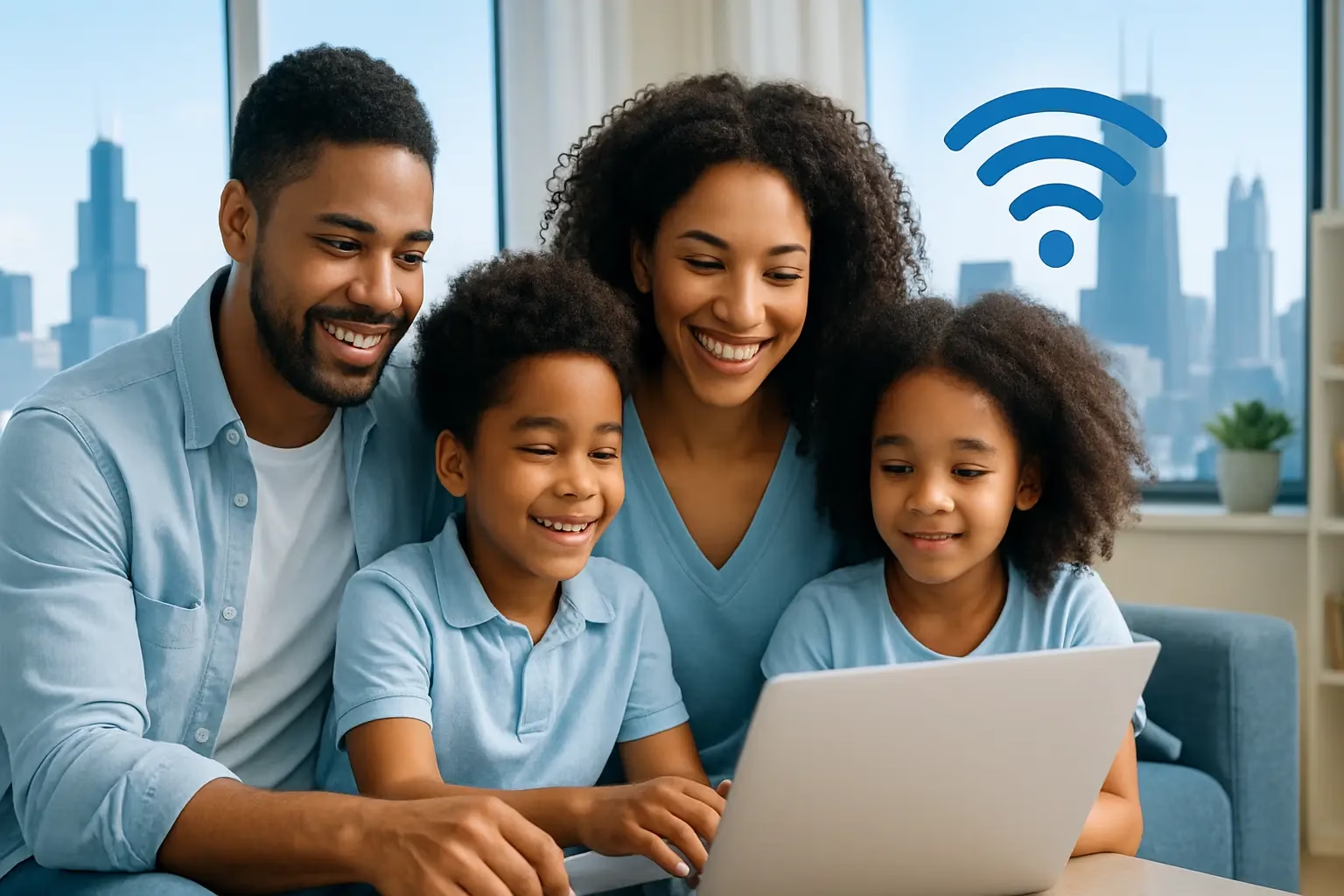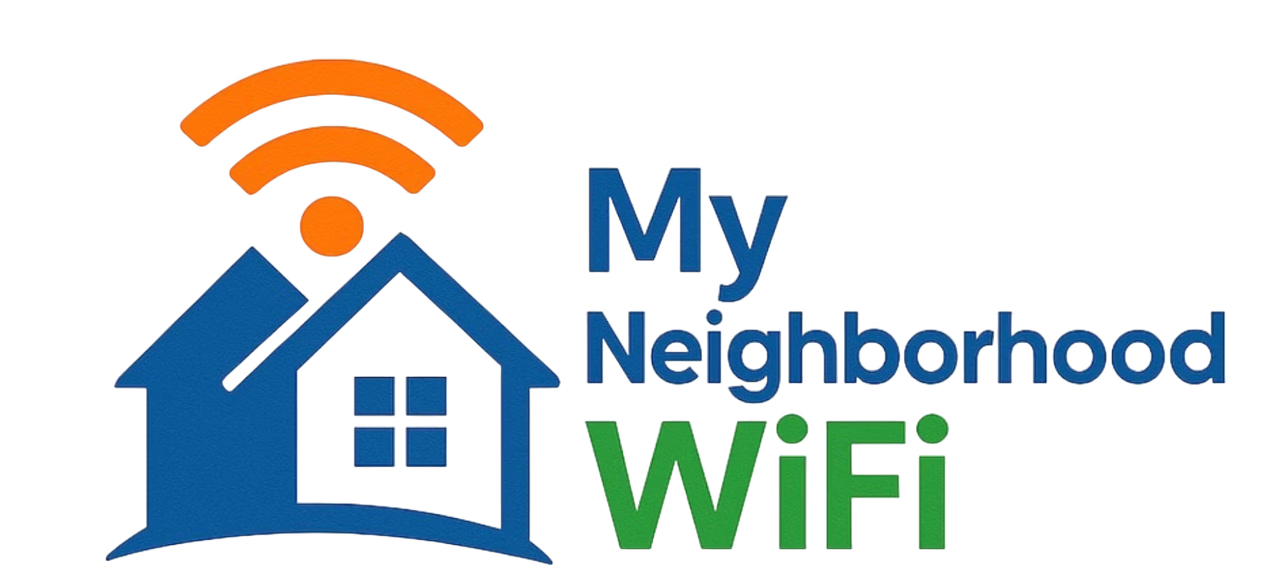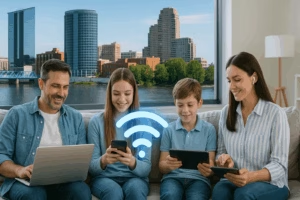
Access to reliable internet is no longer a luxury—it’s a necessity. For families in Chicago, IL who are enrolled in the Supplemental Nutrition Assistance Program (SNAP), affordable high-speed internet can open doors to education, work-from-home opportunities, telehealth, and community resources. If your family receives SNAP benefits, there are several ways you can get connected in Chicago, IL without overwhelming your budget.
Why Internet Access Matters for SNAP Families
For families participating in SNAP, having internet access isn’t just about staying connected socially—it’s about access to critical online tools that can help improve quality of life. Consider how broadband access can help:
- Education: Children can complete homework, use digital learning tools, or attend virtual tutoring sessions.
- Employment: Parents can apply for jobs, submit resumes, and even work remotely when high-speed internet is available.
- Healthcare: Telehealth services offer essential medical care without needing to travel, saving both time and cost.
- Essential Services: Many city and federal forms—such as those for housing, benefits recertification, and tax services—are now digital.
For a family enrolled in SNAP, these benefits can have a long-term positive impact. That’s why Chicago, IL has made connectivity a local priority.
Affordable Internet Options in Chicago, IL
Families in Chicago, IL can access several affordable or even free internet programs. These include federal initiatives such as Lifeline and the Affordable Connectivity Program (ACP), as well as city and community-driven programs that collaborate with providers like Comcast, Astound, and T-Mobile.
Lifeline Program
The Lifeline Program is a federal initiative that lowers the monthly cost of phone and internet service for low-income households, including those receiving SNAP benefits. It provides a discount of up to $9.25 per month for eligible families, and participating providers extend options that families can tailor to their needs. To qualify, you must participate in a program such as SNAP, Medicaid, or Federal Public Housing Assistance.
Affordable Connectivity Program (ACP)
The Affordable Connectivity Program (ACP) replaced the Emergency Broadband Benefit Program to make internet access more sustainable for families in need. For SNAP participants, the ACP can provide significant monthly discounts toward internet bills and possibly cover the cost of a connected device such as a tablet or laptop. While the federal funding for ACP continues to evolve, many Internet Service Providers (ISPs) in Chicago, IL still offer low-cost alternatives that align with ACP’s original objectives.
Chicago Connected Program
The City of Chicago partnered with Chicago Public Schools (CPS) to create “Chicago Connected,” an initiative launched in 2020 to provide no-cost, high-speed internet access to students and their families. For household members receiving SNAP or attending qualifying CPS schools, this program has been a lifeline. As of the 2024–2025 school year, Chicago Connected continues for existing participants but is not open to new enrollments. Still, it remains a landmark model showing how public-private collaboration can combat the digital divide in urban communities.
Top Internet Providers Offering Affordable Options for SNAP Families
While not all providers participate in every low-income program, several companies in Chicago, IL have created specific plans designed for affordability. Below is a breakdown of key offerings available to SNAP households:
| Provider | Plan Name | Approx. Monthly Cost | Connection Type |
|---|---|---|---|
| Comcast Xfinity | Internet Essentials | $9.95/month | Cable |
| Astound Broadband (formerly RCN) | Connect2Compete | $9.95/month | Cable |
| AT&T | Access from AT&T | $10–$20/month | Fiber or DSL |
| T-Mobile | Project 10Million | Free for eligible students | Wireless |
| Human-I-T | Low-cost broadband | Varies | Refurbished devices + broadband |
These plans aren’t just inexpensive—they are designed to simplify eligibility by coordinating directly with programs like SNAP, Medicaid, and SSI.
How to Qualify and Apply
Step 1: Gather Required Documents
Eligibility for most low-cost internet programs begins with proof of participation in SNAP or other government assistance programs. Common documents include:
- A copy of your Illinois SNAP benefits letter or EBT card
- Photo identification that matches the beneficiary name
- Recent utility bill or lease (for address verification)
Step 2: Choose a Provider
Review the providers in your area and select one with coverage that meets your household’s needs. Searching platforms like Reddit or Quora can offer real user feedback from Chicago, IL residents about connection reliability and customer service quality.
Step 3: Apply Online or via Mail
Most providers allow applications through their websites or by calling their low-income program support lines. If you’re not comfortable applying online, you can request a physical paper form to submit by mail. Once approved, you’ll receive an installation appointment or, in the case of wireless providers, a modem or hotspot shipped to your home.
Tips for Maximizing Your Internet Plan
Conserve Bandwidth
For plans with limited speeds, here are some ways to optimize bandwidth use:
- Turn off video autoplay features on YouTube or social apps.
- Download, rather than stream, large files during off-peak hours.
- Schedule operating system updates overnight or during school hours when fewer devices are active.
Use Free Digital Literacy Tools
Improving digital literacy ensures every family member can safely and effectively use the web. Consider:
- Following community groups on Facebook for workshops or resource fairs
- Searching YouTube for beginner tutorials on internet safety and web navigation
- Engaging with local Reddit threads where users share free classes hosted by Chicago Public Library or park districts
Public Internet and Community Wi-Fi Resources
Even before setting up a home connection, there are reliable public Wi-Fi options in Chicago, IL. Families can access free connectivity at:
- Public Libraries: The Chicago Public Library has free Wi-Fi at every branch, many staying open late during weekdays.
- Community Centers: Chicago Park District buildings and city-run facilities often include Wi-Fi coverage.
- Public Transit Hubs: Several CTA stations and bus terminals offer short-term free Wi-Fi sessions.
Finding Local Hotspots
Residents can use apps or websites that crowdsource free Wi-Fi locations across Chicago, IL. On Yelp, searching terms like “free Wi-Fi near me” or “internet café in Chicago” lists community hubs where students and job seekers often gather.
How Chicago, IL is Tackling Digital Equity
Chicago, IL has been proactive in addressing the digital divide, especially following the COVID-19 pandemic. The Chicago Connected program was one of the largest municipal broadband efforts in the United States, showing what can be achieved when local government collaborates with private companies and educators. While new enrollments are currently paused, the initiative continues to inform future digital equity programs across the country.
Partnerships That Work
Partners such as Comcast, Astound, and T-Mobile have been instrumental in connecting thousands of students and families to no-cost or low-cost service. The city also adopts public outreach strategies through principals, robocalls, and direct mailers to ensure every eligible household receives the chance to enroll before deadlines expire.
Future Plans for Connectivity
While existing programs focus mainly on student households, future expansions aim to reach more adults who depend on SNAP benefits. This approach acknowledges that employment, education, and family stability all rely on consistent access to information technology. Community input forums (often advertised on Facebook community groups) allow residents to share their experiences and advocate for improvements in speed and reliability.
Understanding the True Cost of Being Offline
For a typical SNAP household in Chicago, IL, being offline can create additional financial pressure. When families can’t compare prices, apply for assistance online, or access virtual learning, they must spend extra time and money on transportation and missed opportunities. By contrast, a family with a stable internet connection can:
- Submit job applications within minutes
- Complete continuing education classes from home
- Book medical appointments online
- Manage SNAP benefits electronically through the state portal
That’s why reliable broadband service is more than a convenience—it’s a direct contributor to economic and social mobility.
How to Get Help Setting Up Internet at Home
Setting up internet can feel complex, but local resources simplify the process. Libraries and community tech programs often have “digital navigators,” trained volunteers or staff who help residents submit ACP or Lifeline applications. You can locate workshops or guides through local Facebook event pages or neighborhood Reddit discussions.
Equipment and Device Support
Many low-cost providers include modems or routers as part of their plans. Some organizations in Chicago, IL also donate refurbished computers and tablets to families who qualify for SNAP or similar programs. Searching YouTube for “how to set up a home Wi-Fi network” offers quick tutorials for getting started.
Tips for Online Safety and Privacy
While affordability is a key concern, safety is just as important. Here’s how households can protect themselves online:
- Create Strong Passwords: Use combinations of upper and lowercase letters, numbers, and symbols.
- Limit Sharing Personal Information: Remind children not to post addresses or personal details on social platforms.
- Use Secure Connections: Always look for https:// when submitting sensitive data.
- Parental Controls: Use built-in browser settings or YouTube’s restricted mode to filter inappropriate content.
MyNeighborhoodWiFi Initiative and Community Empowerment
MyNeighborhoodWiFi.com highlights resources that help bridge the gap between affordability and accessibility. Families in Chicago, IL who participate in SNAP don’t just need low-cost internet—they need ongoing support, digital training, and access to safe online spaces where they can thrive. When community networks, local governments, and families unite around equitable internet access, the benefits ripple outward into education, employment, and opportunity for all.
Written by admin
Content writer and tech enthusiast sharing insights on internet connectivity.



